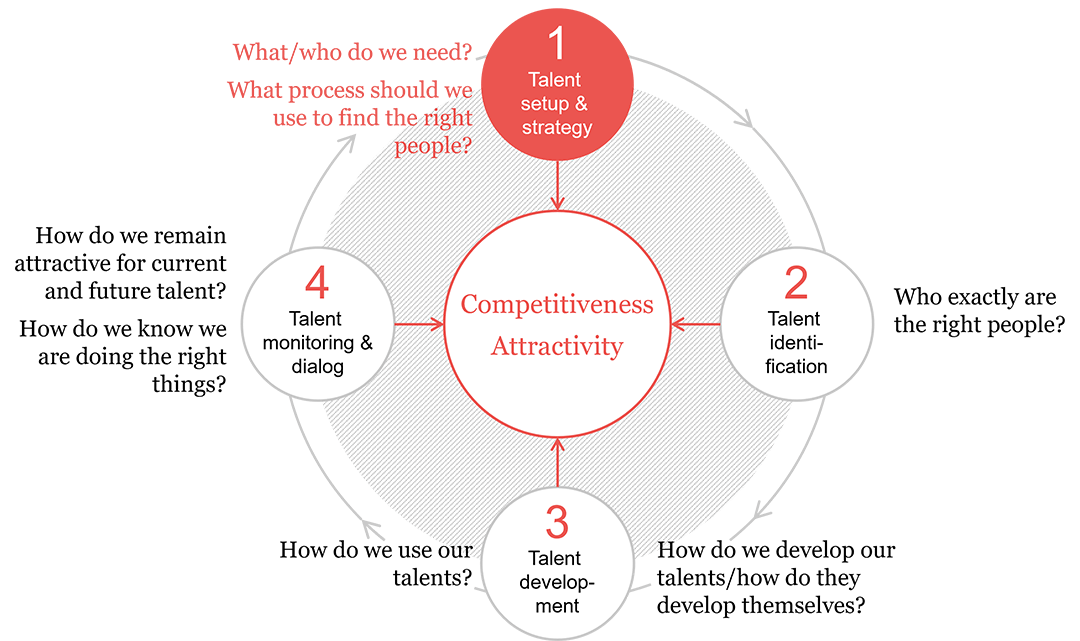Talent Strategy
- How does our talent program tie in with our business objectives?
- What percentage of our future personnel requirements do we want to cover through talent?
- How much diversity do we want to incorporate when filling positions in the future?
- What is a meaningful process to define competencies relevant for success, to find the right talents and to keep an eye on the big picture with a clear talent strategy even in turbulent times?
In “strategic talent management”, too, the classic planning paradigm is no longer in line with the times. Flexibility and agility play a much greater role in most companies than they did some years ago. With an agile-participative co-development approach, we work with you to develop a strategic talent approach that leverages the potential of your talent and, in turn, the potential of your organisation. In doing so, we work with a broad toolbox to develop strategically relevant scenarios, structure and facilitate the development of concrete courses of action, measures and implementation projects. During the implementation process, we offer support in the form of leadership development, sparring, and change consulting and guidance.

Figure: Talent strategy as the basis for systematic talent management
5 steps to talent strategy
1. Starting point: Corporate strategy
The goal and starting point is your corporate strategy. We align all our talent activities with this strategy right from the start, focusing on precisely those competencies that will make a decisive contribution to achieving the company's goals.
2. The critical functions
Using this as a basis, we identify the key functions that are crucial to the future success of the company.
3. What, how much, when, where? We examine questions such as these:
What are your talent needs for the coming year(s)? Where is talent required? When do you need talent? What is the critical mass of talent for success?
4. Systematically linking succession planning, career and talent management
We identify which HR instruments and processes are in use, how the leadership concept is understood, and how HR and management work together. In the process, we pay attention to the interfaces with other HR measures and processes and identify how they can complement each other. Talent management, succession planning and career management answer three aspects of one shared question: How can your company remain competitive and attractive? Systematically combined, they make both the company and its employees stronger.
5. Talent Strategy
Building on this, we offer advice on or develop talent strategy and measures - such as internal nomination processes, selection or potential analyses, complementary external talent acquisition, internal development programs, individual measures, project assignments, measures for employee retention and internal and external talent-employer branding.
